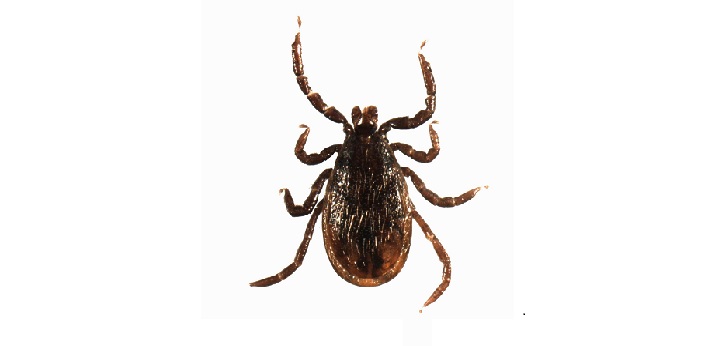Duplicate DNA a hallmark of tick genome
Researchers sequence the genome of the Lyme-disease-causing tick and find lots of duplicative elements.
Researchers have sequenced the genetic blueprint of one of the most prolific pathogen-transmitting agents on the planet - the Lyme-disease-spreading tick (Ixodes scapularis) that bites humans. The findings could lead to advances in not only disrupting the tick's capacity to spread diseases but also in eradicating the pest.
The large tick genome - smaller than but similar in complexity to the human genome - supports redundancy, said R. Michael Roe, William Neal Reynolds Distinguished Professor of Entomology at North Carolina State University and a co-author of a paper published in Nature Communications that describes the tick genome. Roe said that the size and complexity of the genome - combined with its duplicative elements - were problematic for tick researchers.
"Repetition makes assembly more challenging," Roe said.
Roe focused his work on the processes that help ticks find each other and mate; how ticks produce eggs and the hormones that regulate egg production; what makes ticks bite; and how ticks feed and process their blood meals.
"We identified the hormones used for development, the process of how ticks utilize the blood that they eat, and how they convert that blood into eggs," Roe said.
Besides repetitive elements, Roe noted important differences between the tick genome and insect genomes.
"We know from previous work that, at the genome level, ticks do not control their development like insects," Roe said. "For example, ticks don't have a juvenile hormone that insects have. That hormone is responsible for color, molt patterns, migration activity and many other functions in insects. That's important because some of the safer insecticides are based on upsetting the juvenile hormone balance."
Tick females have a hormone that regulates egg development. Learning how to block that hormone could lead to the development of a "birth-control pill" that would go a long way toward eradicating the pest, Roe said.
Roe said knowledge gleaned from the genome could be used to develop new ways to attract and trap ticks in order to disrupt their "love at first touch" mating practices. Studying the ways ticks are attracted to humans could be used to produce new tick repellents, including natural repellents; Roe and colleagues at NC State are currently developing such products.
Source: North Carolina State University
http://www.biologynews.net/archives/2016/02/09/duplicate_dna_a_hallmark_of_tick_genome.html
BİOLOGY NEWS
-
RNA from Trained Aplysia Can Induce an Epigenetic Engram for Long-Term Sensitization in Untrained Aplysia.
-
HOW WE BECOME HAPPY
-
More tomatoes, faster: Accelerating tomato engineering
-
Purest yet liver-like cells generated from induced pluripotent stem cells
-
Legions of nanorobots target cancerous tumors with precision
-
CRISPR gene editing reveals new therapeutic approach for blood disorders
-
Quantum dots with impermeable shell: A powerful tool for nanoengineering
-
Thousands on one chip: New method to study proteins
-
Gene Drive Technology: Where is the future?
-
Four newly identified genes could improve rice
-
Watching the luminescent gene switch
-
DNA damage by ultrashort pulses of intense laser light
-
Mantis shrimp inspires next generation of ultra-strong materials
-
Specialized life forms abound at Arctic methane seeps
-
Ocean warming and acidification impact on calcareous phytoplankton



